Children's Lives
What was it like to be a child during the Civil War?
In Tennessee, war seen through the eyes of children could be very traumatic. Most children never saw the large battles fought in the state. To them, the war meant missing their brother or father who was off fighting in the army. It meant living in towns with soldiers all around.
Many times it meant going hungry. Without the help of men in the family, some children were forced to do the household chores and the work on the farm.
In towns, children experienced large armies passing through and taking whatever they needed like food. Many schools were shut down and turned into hospitals.
But the very worst thing a child experienced during the war was the loss of a family member. All too often, those older brothers and fathers that went off to fight never came home. They were either killed in battle or died from disease.
African American children
Many African American children ran away from home with their parents. Without money, the only place the families could find to stay were large camps set up by the Union army. These camps were called contraband camps. Here they were put to work along with the adults doing various kinds of tasks for the Union army.
Dig Deeper: Why was the name contraband used?
Some African American children, like young John McCline, ran away from the Nashville area plantation where he was a slave and joined the Union army. As a soldier, McCline participated in the bloody battles of Shiloh and Chattanooga and traveled throughout the South helping carry supplies, serving officers and caring for mules.
Nat Love, a ten year old slave on a Nashville plantation, later wrote that all the slaves knew about the war. All the boys were eager to join the Union army. Being too young, they settled for playing “war,” but had difficulty in finding anyone who wanted to be Rebel soldiers. Once the boys attacked a large nest of wasps that “gave us…the hardest fight of our campaigning…We attacked with cheers, only to be driven back time and again and finally we were compelled to make a very undignified retreat, at full speed in the direction of home.”
Battles fought at their homes
Other children were unfortunate enough to see the war up close. Many battles in Tennessee often happened on their own farms and in their home towns. For these children the war meant sheer terror.
Alice McPhail Nichol was only eight years old when the Battle of Franklin took place around her house. As the battle raged around them, she and her family took shelter in their cellar. Years later she remembered what it was like. “The first sound of the firing and booming of the cannons, we children all sat around our mother and cried.”
But the worst part for young Alice was after the battle. As she and her family ventured out of their house, she tells of the horror she saw. “Men dead lying in the yard. One was sitting straight up dead against a sweet apple tree in the side yard. Another dead to the left of the front door…(We) had to step over the dead and such an awful odor of blood and gunpowder, the whole sight made me sick, and I flew back to my mother.”
The Civil War was a very traumatic time for children, because it occurred in their home state, in their home towns, and sometimes at their own homes. Their life was disrupted by absent fathers and brothers, schools being closed, and large armies marching and fighting around them.
For some like John McCline and Nat Love, it was a time of great adventure. For others like Alice Nichol it was a time of fear and heartache. But for all children that lived in Tennessee during the Civil War it was a time they would never forget.
Picture Credits:
- Carte-de-visite (a type of photograph) of a young boy in a dark suit and bowtie. Back is printed with “Excelsior, W.Y. Haggard, Lebanon, Tenn.” Tennessee State Museum Collection, 2001.15.36
- Mother Making Ashcake” A drawing showing an African American woman cooking at the fire while a child plays on the floor. It is from an early edition of a book written by Nat Love, The Life and Adventures of Nat Love. Love, 1854-1921, was born into slavery on a plantation in Nashville. After the war, he moved west and gained fame as a cowboy and Buffalo Soldier. Used with permission of “Documenting the American South,” The University of North Carolina at Chapel Hill Libraries.
- Drawing from the a book “The Child’s First Book,” by William A. Campbell in 1864. Used with permission of “Documenting the American South,” The University of North Carolina at Chapel Hill Libraries.
- Ambrotype of a child, probably a girl, seated on a covered table. No other information is available. Tennessee State Museum Collection, X82.1.3
-
Carte-de-visite, (a photograph) of a boy soldier, credited to the Morris Gallery of the Cumberland, Nashville, Tennessee. Several sources identify the image as Johnny Clem, the famed boy soldier of Shiloh and Chickamauga. For more information on Johnny Clem, go to http://www.ohiohistorycentral.org/entry.php?rec=85 Photo from the Library of Congress
- Carte-de-visite (a photograph) of a woman with two young girls, probably her daughters. “John Duray, photographer, 33 Union Street, Nashville, Tenn” is stamped on the back. Tennessee State Museum Collection, 2001.15.43
- Tintype of young girl with a hand-tinted pink dress. “Hughes Bros., Nashville, Tenn,” is embossed on the left side of the case. Hughes Brothers photographers worked in Nashville under that name from 1855 through 1866. Tennessee State Museum Collection, 95.19.121
- A carte-de-viste, a type of photograph, of three children probably from East Tennessee. It shows what appears to be the sister in the back with her two brothers, each holding a hat, in the front. The back is stamped with the name, "J. Bushong, photographer, East TENN." Private collection.
Civil War and Reconstruction >> Civil War >> Life At Home >> Children's Lives
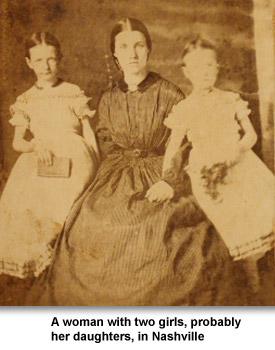
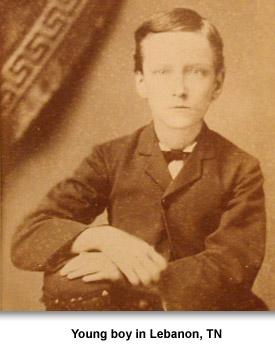
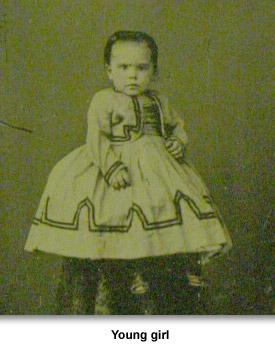
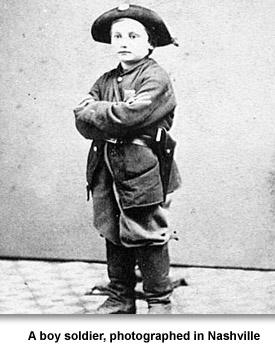
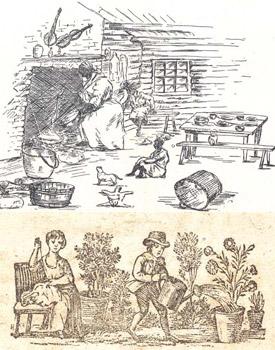
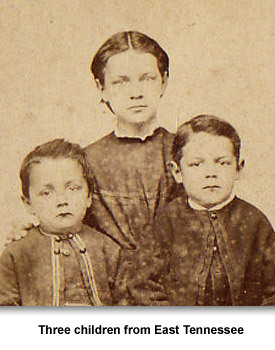
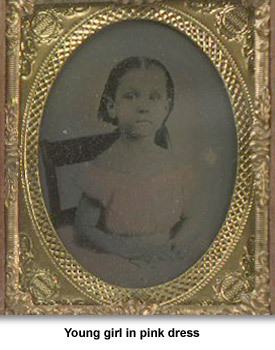
 Sponsored by: National Endowment for the Humanities
Sponsored by: National Endowment for the Humanities